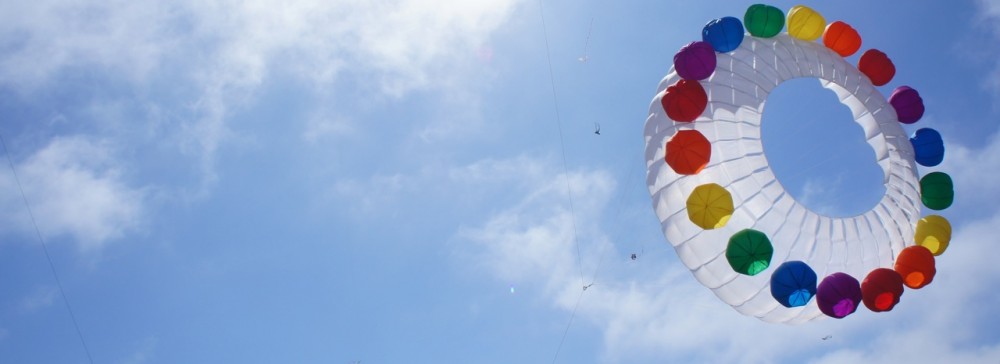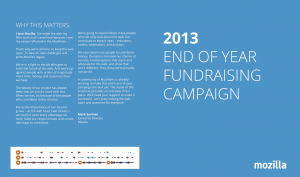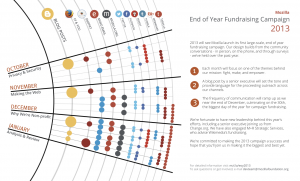My colleague Bobby Richter opened up a universe of possibilities in his post Thinking About Payments in Appmaker:
“As a powerful, disruptive tool in the hands of citizens and small NGOs, Appmaker has the potential to be truly meaningful. A kid raising money for school grounds improvements can go door-to-door with an app she’s put together in minutes on her home computer and track her progress. A small disaster relief organization can create a fundraising and awareness app that its constituents can use to collect funds with short notice. A Haitian farmers’ co-op can give its members the ability to use their new $25 smartphone for record-keeping and transaction processing when selling to customers and optimizing workflow.”
The vision is exciting. I am most fascinated with the potential Appmaker holds for nonprofits (that’s my area of expertise and interest) and even individuals who care about a cause. Here’s where my brain goes:
What if building an app for raising money was made so simple, any individual or nonprofit could do it?
Fundraising evolves with technology. In my lifetime I’ve witnessed a decent chunk of the history of small-dollar fundraising. Telephone, direct mail, street solicitation (people with clipboards), email appeals, text-to-donate, crowdfunding, online advertising (e.g. Google Grants), cause marketing; it’s enough to overwhelm. And for smaller nonprofits or individuals with a cause, it usually does overwhelm. And now, we are witnessing the rise of mobile. Raising money in an increasingly tiny-screen-obsessed world is still somewhat out of reach, particularly those that don’t have the deep pockets of, say, an American Red Cross (more on this in a minute).
From a donor perspective, the user experience has also drastically changed. If I am in the frame of mind to donate, there are infinite low-friction ways to lighten my wallet. I’m not hunting down my checkbook, a pen, and stamps. I have a PayPal account, Amazon Prime, or Google Wallet so I can donate in most cases in just three or four clicks. I have an Indiegogo account, so when a friend shared this heart-wrenching campaign in my Facebook feed, I donated and received a confirmation email in less than 30 seconds. And I can instantly share the fact that I just donated on all my social networks, promoting the cause to hundreds of potential donors — donors a fundraiser probably could never have reached on their own without my network.
With Appmaker (theoretically) the creation of a fundraising app might become as easy as picking out a rug on Wayfair.com or buying a coffee using Square.
What does all this mean for nonprofit and personal DIY fundraising? Honestly, I don’t think we’ve figured it out quite yet because the cost to play is too high for most. How to effectively augment fundraising strategy with Twitter or Facebook is still difficult, even for many professionals. Staff resources and capital are precious and most nonprofits are generally risk-averse (h/t Dan Pallotta). Hiring a developer to build a mobile app or investing in any new technology with uncertain ROI takes drive, time, and deep pockets. And by the time an organization figures out one piece of technology (say, how to run a decent campaign on Indiegogo), a new technology is emerging.
But one thing is certain: mobile is rising and isn’t going away anytime soon. I see Appmaker as a chance to put advanced app development technology into the hands of just about any DIY fundraiser or nonprofit for nearly $0. This is a very low risk bet. A front-end investment of energy plus a healthy dose of “maker spirit” might bump any person, or even the smallest nonprofit, to the frontline of the latest mobile fundraising trend. That’s why I hope lots of nonprofits and DIYers jump in with us to play with Appmaker.
Just Riffing
No two nonprofits are alike. Each faces unique challenges to get the resources they need for mission-driven work. How could something like Appmaker be a force-multiplier in that kind of fundraising? We’re only going to find out through trial and error, experimentation, and thinking big about what’s possible.
I can’t wait to roll up my sleeves to build some Appmaker components. Until I get to do that, I’ve thought about how custom apps might work in the real world. Here are a few off-the-top-of-my-head Appmaker ideas for a two small nonprofits I know well:
Appmaker Ideas: GunbyGun (https://www.gunbygun.org/) currently uses Crowdtilt to crowdfund gun buy-backs within cities that struggle with gun violence.
GunbyGun could build a template app for each gun buyback event and give it to anyone in the community to remix, hyperlocalize, and share. One of the app’s components could be a crime-map. Individuals might run personal fundraising campaigns at their schools, workplaces, churches; etc by sharing the real-time crime map on their own tablet or smartphone. Sharing crime data about gun violence as a segue to GunbyGun’s upcoming event is a great pitch just about anyone could do on the spot. The donor can input their email address into the app, and the app can send an automated email with a link to donate.
Or, a GunbyGun app could show a list of donors with a photo of the weapon each donor took off the street with their donation.
 Another example: Maker Parties. Maker Parties by Mozilla Webmaker organize thousands of people at events all around the world to encourage people to build the web. Attendees are very highly invested in the core mission of Mozilla. What if we could built an app that could very simply facilitate in-person donations during the event via smartphones? People could designate if they want their donation to go to Maker Parties in their own city, country, or if they’re OK if Mozilla decides where best to spend the funds. A map component could visualize all the parties happening around the globe and the # of people building the web, and how much is being donated, in real time. Maybe giving amounts could tie directly to actual costs – for instance, “help buy lunch for 2 makers – $5”. Another component in the app might ask people to signup to volunteer at the next Maker Party event.
Another example: Maker Parties. Maker Parties by Mozilla Webmaker organize thousands of people at events all around the world to encourage people to build the web. Attendees are very highly invested in the core mission of Mozilla. What if we could built an app that could very simply facilitate in-person donations during the event via smartphones? People could designate if they want their donation to go to Maker Parties in their own city, country, or if they’re OK if Mozilla decides where best to spend the funds. A map component could visualize all the parties happening around the globe and the # of people building the web, and how much is being donated, in real time. Maybe giving amounts could tie directly to actual costs – for instance, “help buy lunch for 2 makers – $5”. Another component in the app might ask people to signup to volunteer at the next Maker Party event.
For individuals, Appmaker could power fundraising for their own personal cause. Here’s a great example: The fate of Torresminho the kitten was forever changed through the power of personal fundraising. Upon discovering a kitten hit by a car, a guy built a fundraising app to raise money for the little kitty’s medical bills. Kitten face + mobile fundraising app = warm fuzzies for everyone.
The possibilities are pretty much endless. We’re going to need lots of enterprising nonprofits and individuals who are excited about Appmaker to help us put form to its potential.
Next: We Leap
We play, we try, we fail, we build cool MVPs. We need people to jump in, even if (maybe especially if) they don’t think they have the technology chops to build an app. There are lots of questions we’ll need to answer as we experiment:
- How do we build components that make use of best practices in fundraising today? For instance, how do we make the post-donate “share” function outrageously good in a fundraising app?
- How does an app augment nonprofit fundraising strategy?
- What are a few initial DIY app templates that might appeal to individuals?
- Are there nonprofits who could justify investing more in mobile fundraising?
- How can Appmaker serve emergency response or disaster relief fundraising?
- How will payment processing components function in Appmaker for nonprofits? For individuals?
- Can Appmaker make donation appeals more personal, for instance, by using geolocation?
If you’re excited about the possibilities of Appmaker and want to try building an app or components with us, please get in touch through comments or find me at Mozilla.
This is an exciting time to be a fundraiser.



